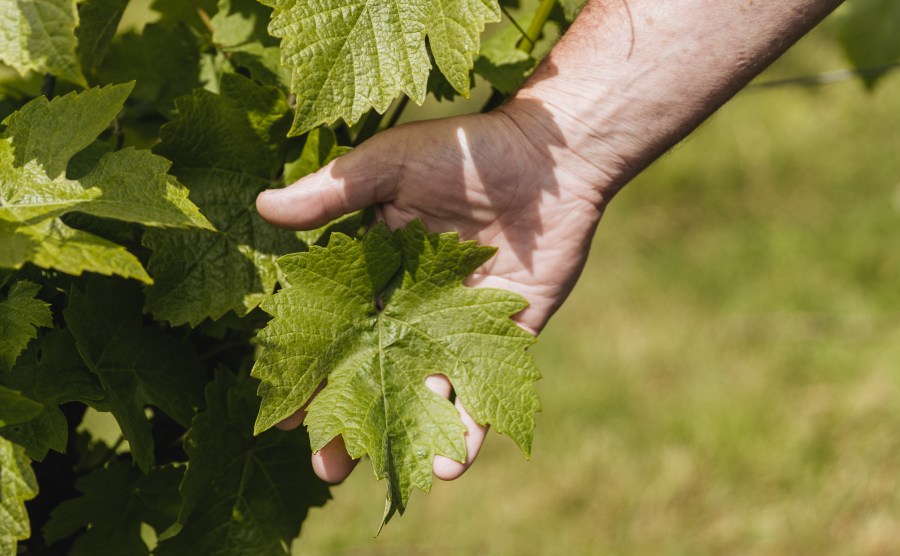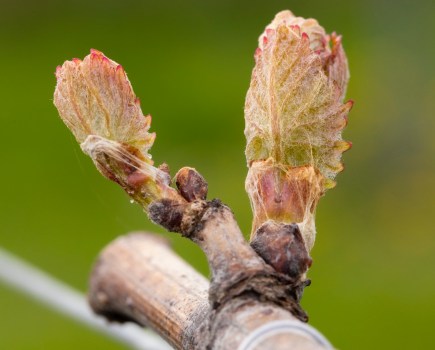As a Senior Viticulturist at VineWorks, when it comes to nutrition, my go-to solution is to get the pH right first. I aim for the higher acceptable range of the pH spectrum (6.8-7.2). This is because the headline macronutrients such as nitrogen (N), phosphorus (P), and potassium (K) then become more readily available to the vine.
This is particularly important as they are the more costly element of the nutrition package. That said, behind the scenes a lesser-known group of nutrients, the micronutrients, are equally crucial, albeit needed in smaller quantities. These essential trace elements zinc, boron, iron, manganese, copper, and molybdenum help regulate plant metabolism, ensuring the best possible fruit and, ultimately, the best possible wine. They may be required in tiny amounts, but their impact is anything but small.
The micronutrient line-up
- Zinc (Zn): Essential for proper vine growth and fruit set, zinc deficiency leads to stunted shoots and small, misshapen leaves. If your vineyard is struggling with poor fruit development, it might be time to give zinc a closer look.
- Boron (B): The matchmaker of the vineyard, boron is all about pollination and fruit set. Deficiencies lead to poor flowering, inconsistent berry development and distorted shoots – definitely not ideal if you’re hoping for an even crop.
- Iron (Fe): The lifeblood of chlorophyll production, iron is the key to energy transfer in photosynthesis. When levels dip too low, vines develop interveinal chlorosis, turning leaves a rather unappealing yellow-green.
- Manganese (Mn): Vital for enzyme activation, manganese supports photosynthesis and nitrogen assimilation. Deficiency symptoms resemble iron deficiency, but unlike iron, manganese deficiencies are more common in high-pH soils.
- Copper (Cu): Known for its role in disease resistance, copper strengthens vine cell walls, lignin formation and plays a part in enzymatic reactions. It’s also the active ingredient in Bordeaux mixture – every vineyard’s old-school fungal foe.
- Molybdenum (Mo): This one is a bit of an enigma, needed only in minute amounts. However, without it, vines struggle to process nitrogen effectively, leading to poor growth and lower yields.
Getting the balance right
Micronutrients operate on a fine line – too little and vines suffer, too much and toxicity can become a real issue. This is where soil tests, petiole analysis, and careful vineyard management come in. Different rootstocks, soil types, and climate conditions all influence how vines access and utilise micronutrients.
For example, zinc and iron deficiencies are more common in high-pH, calcareous soils, while boron issues often show up in excessively sandy or acidic conditions. Over-enthusiastic copper applications, often from years of fungicide use, can accumulate in the soil and interfere with other nutrient uptake. It’s all about balance.
Helping your micronutrients
- Soil pH management: Maintaining an optimal soil pH ensures better micronutrient availability. For example, iron becomes less available in high-pH soils, requiring amendments such as sulphur or acidifying fertilisers.
- Organic matter addition: Incorporating compost or organic mulches improves soil structure and microbial activity, enhancing nutrient availability.
- Cover crops: Planting legumes or deep-rooted plants can improve soil aeration and nutrient cycling.
If the pH is locking up some of the micronutrients, the way to cater for the vine’s needs is to use soil and tissue testing to pinpoint the deficiencies, and then feed them a little and often with foliar sprays as a quick fix for immediate uptake. This is especially relevant for nutrients like zinc and boron, which may struggle to move efficiently through the soil. Timing of the applications of micronutrients is a dark art and that’s a story for another day!
The bottom line
Great wine starts with great fruit and great fruit starts with well-fed vines. While macronutrients lay the foundation, micronutrients add the finesse, ensuring vines stay healthy, productive, and ready to take on the challenges of the growing season.
So next time you’re admiring a lush canopy or tasting a particularly vibrant vintage, spare a thought for the humble micronutrients working behind the scenes. After all, in viticulture, as in life, it’s often the smallest things that make the biggest difference. This is why VineWorks’s approach is to consider your vineyard – one vine at a time.
Photo: © Daria Szotek, VineWorks 2023
For more like this, sign up for the FREE Vineyard newsletter here and receive all the latest viticulture news, reviews and insight




